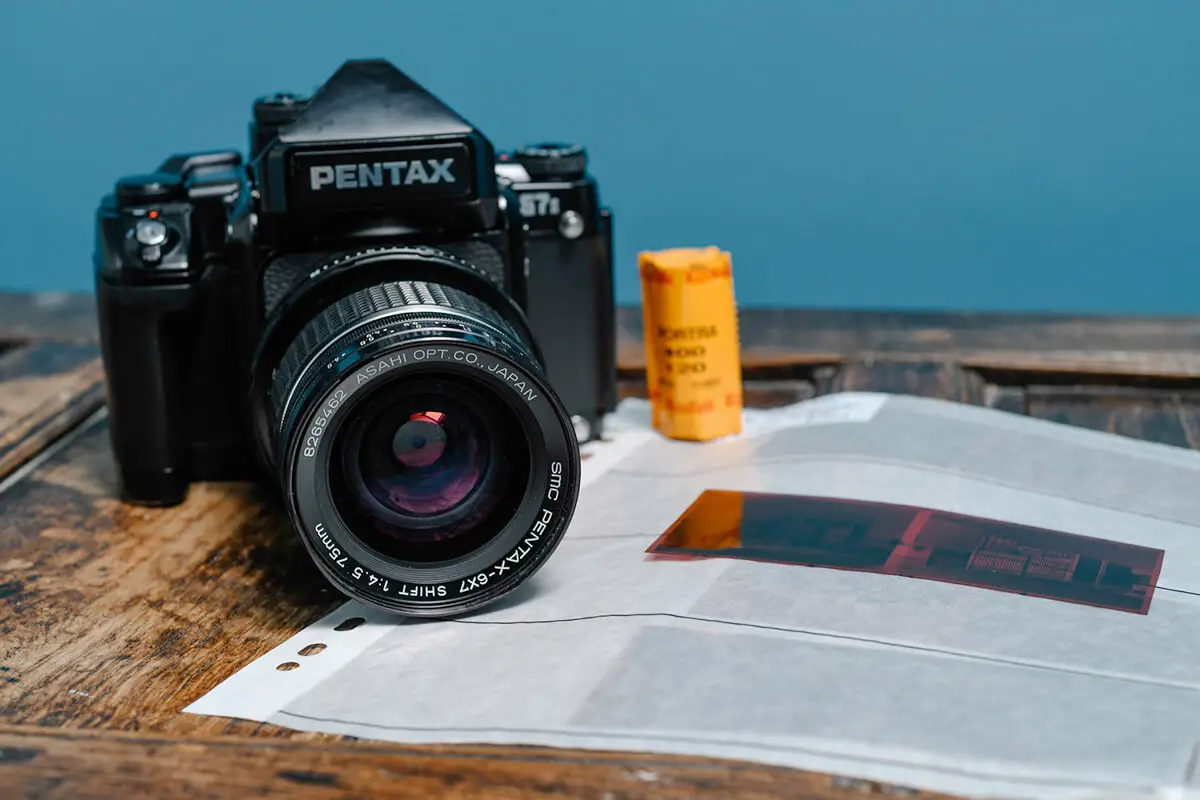I’d originally got my Pentax 67II primarily for portraits and the chance of using the sublime 105mm f2.4 lens. For me, that is the perfect portrait lens, as it delivers a wonderful spatially separated look, usually only found from a large format camera set up. Whilst there are plenty of merits of a one-camera and one-lens set up, I did often feel limited when I wanted a wider composition, so I decided to investigate my options.
Why bother with opting for a shift lens; after all, Lightroom and Photoshop do a great job in correcting any in camera limitations? However, it was after talking to, and marvelling at the precision and clean lines of the work of Ashley Carr, https://www.instagram.com/acarrphoto/ that I realised how much I needed one (yes, needed, not wanted). After looking for a UK seller without luck, my impatience got the better of me and I decided to purchase a 75mm f4.5 shift lens through a Japanese outlet on eBay.


As it is the first shift lens I’ve owned, I wasn’t used to the pre-focusing, aperture setting, and meter reading process required. Compared to the 105mm f2.4, using the 75mm f4.5 shift certainly slowed the image taking process down more than usual. For each exposure you need to open the lens fully to f4.5, otherwise, the screen won’t be bright enough for you to focus. Then you must remember to step it down again to match the aperture you wish the exposure to be taken on, otherwise, your image won’t be metered correctly. Once you start composing your image and extend the shift mechanism, the image will need to be metered for again as it will potentially include more sky than you originally framed. Rather than metering centre weighted or matrix it’s also advised to spot meter for a more accurate reading.





Perhaps I made my life more difficult by shooting at night and introducing all these new steps into my shooting process which resulted in me making plenty of errors. However, I’m sure with practice the workflow will become more second nature; In the meantime, I’m just glad I didn’t mess these images up!
~ Matt
Submit your 5 Frames… today
Get your own 5 Frames featured by submitting your article using this form or by sending an email via the contact link at the top of the page.
Share your knowledge, story or project
The transfer of knowledge across the film photography community is the heart of EMULSIVE. You can add your support by contributing your thoughts, work, experiences and ideas to inspire the hundreds of thousands of people who read these pages each month. Check out the submission guide here.
If you like what you’re reading you can also help this passion project by heading over to the EMULSIVE Patreon page and contributing as little as a dollar a month. There’s also print and apparel over at Society 6, currently showcasing over two dozen t-shirt designs and over a dozen unique photographs available for purchase.








8 responses to “5 Frames… With a medium format shift lens on Kodak Portra 400 (EI 400 / 120 format / Pentax 67II)”
Thanks Tim. I’d recommend it, GAS or no GAS 👍🏻
Great work. I want one now(Gas)
Hey Christian, many thanks for your kind words. I’m reserving the right to make more errors, but hopefully they will be fewer and far between. In the meantime, thank goodness for LR and PS to help along the way!
Great to hear you have a process that’s working for you, but remember frontiers are meant to be crossed…even the final one. 🙂
Hey Bill, thanks for your comments. It sounds like your really well set up to deliver great panoramic images without the additional weight of the Pentax.
Matt, thanks for sharing those shot in camera corrected verticals. I have a Canon 35 T&S for my F1-n and it enables excellent stitching results for multi-frame panoramic photographs. The F1-n has a stopped down metering mode just for shooting with this type of lens. It is also a beautiful lens for “normal” shots.
This is cool to see. Been toying with the same and my 6×7. Something never seems quite right when doing it in software afterwards. Currently for this type of photo Ive resigned to using only 35mm and a 24m lens so I can nail the verticals in the viewfinder and then just crop out the excess lower part of the image which is required to get that right but isn’t part of the image I envisioned. It’s not a great methodology but it seems to result in consistently more natural results than software. Commiting to a tilt shift is so I can do this right in 120 is the final frontier haha
Hi Matt. Really nice photographs! Perspective corrected images taken at night, with urban/industrial-ish subjects – could there be anything more exciting? As you already made plenty of errors, you can now proceed and enjoy the abilities of your shift lens. 🙂
I sometimes struggle in accurately aligning my frame with the lines of the subjects, but a little fine tuning in Lightroom does the job. Cheers, Christian.